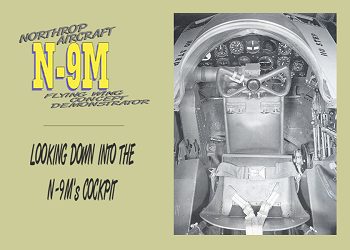
 |
On 21 September 1943, the N-9M-2 began to provide the first reliable drag data. It indicated that the full-scale XB-35 would suffer greater drag than had been predicted in wind-tunnel model tests. The N-9M-2 exhibited satisfactory longitudinal and lateral stability, but there was some difficulty with directional control.
John Myers continued to fly the N-9M until he was injured in a high-speed taxi accident in the XP-56 in September 1943. Two other Northrop test pilots, Harry Crosby and Alex Papana, were brought in to continue the program.
Sometime during October 1943, the N-9M-2 was modified with leading edge slats and Harry Crosby checked them out in a test flight on 25 October. Crosby conducted limited testing throughout the remainder of the year.
In December 1943 Northrop's chief aerodynamicist, Dr. W. F. Sears, contracted Crosby to conduct a series of test flights with two sets of auxiliary fins of different sizes, added to the top of the driveshaft housings on the N-9M-2. The purpose was to determine the effect of increased directional stability on the lateral-directional dynamic stability and drag effects.
